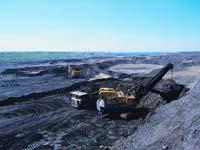Asia eyes the Oil Sands

Heightened foreign investment in Canada’s unconventional oil and gas industry will be driven primarily by Asian markets, according to Ernst & Young.
And as foreign companies shift from investors to operators, national oil companies and their local partners will need to decentralize business models, integrate and streamline processes quickly, and embrace a more international corporate culture.
“There are a host of reasons why Canada is such an attractive destination and why foreign companies are investing here,” said Lance Mortlock, Senior Manager in Ernst & Young’s Canadian Oil & Gas practice.
“Rising oil prices, high debt levels of the junior players, a stable financial and regulatory environment, huge reserves, proximity to the United States, vast expertise and a well-established infrastructure are just a few of them. But to make the most of these transactions, Canadian and foreign companies need robust due diligence and careful integration planning.”
In 2010, the number of inbound oilsands-focused transactions from Asia tripled, as countries like China, Japan, Thailand and South Korea actively sought to secure natural resources around the world and completed several major deals in Western Canada.
The last 12 months have seen several notable transactions in the sector, including Sinopec International Petroleum Exploration and Production Company’s acquisition of ConocoPhillips’ 9.03% interest in the Syncrude Canada Ltd.’s oilsands operation for US$4.65 billion. Thailand made its first foray into the Canadian oilsands with PTT Exploration and Production’s purchase of 40% of the Kai Kos Dehseh oilsands project from Statoil ASA for US$2.28 billion. In all, Asian investment accounted for US$9.2 billion during 2010 (compared to US$5.9 billion in 2009 and virtually nil in 2008).
“Foreign interest in the oilsands is expected to continue in 2011,” said Mortlock, “and this investment activity significantly increases the likelihood of integration challenges and complexities, which often occur in the form of cultural and business differences. To date, most investments have been in a non-operated capacity, but as foreign companies begin to take on operator roles, like in Korea National Oil Corporation’s acquisition of Harvest Energy in early 2010, various issues could surface.”
Some of these challenges could include the need for foreign investors to hang on to local talent to ensure the right skills are in place when transitioning to an operator role. A supplier challenge could also arise, with foreign companies wanting to use their own trusted suppliers instead of sourcing local resources. In addition, local companies may have difficulty adapting to new systems and processes, while foreign acquirers may be unfamiliar with local laws, regulations, as well as environmental and security guidelines.
“Companies need to recognize cultural differences, embrace innovations that enable growth - wherever they come from - and integrate systems globally as quickly as possible,” said Mortlock. “A big part of determining success will come from their ability to establish effective knowledge exchange processes and programs to the benefit of all parties involved.”
The 2010 trend that saw Canadian and foreign entities partnering through strategic alliances and joint ventures is also expected to continue. This enables risk sharing and the pooling of Canadian technology with foreign financial strength and resources. Technology will also play a strategic role in transactions with foreign buyers looking to reap the benefits from advancements being made by Canadian oil and gas players.









